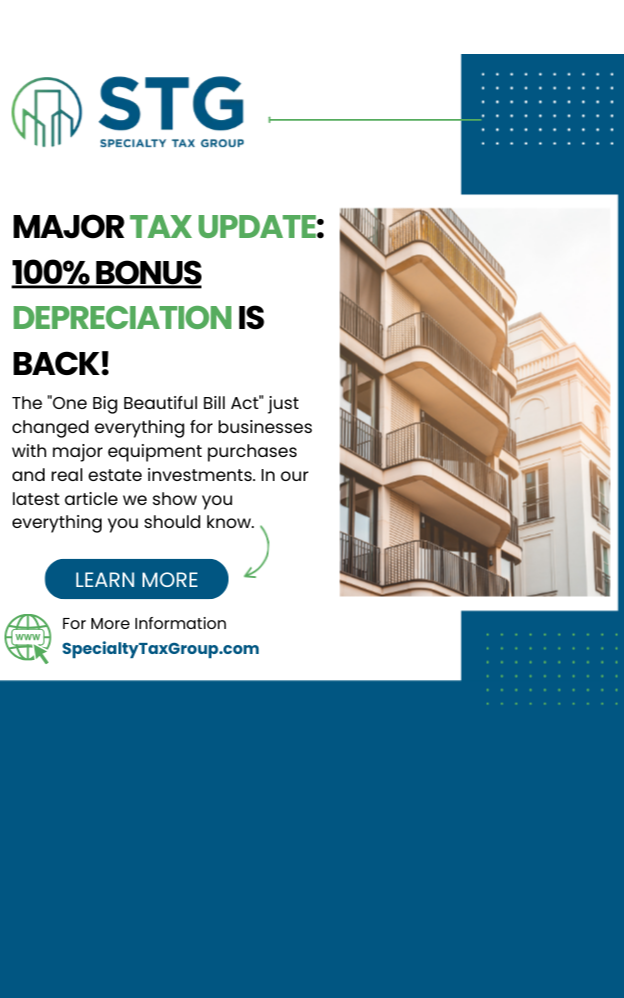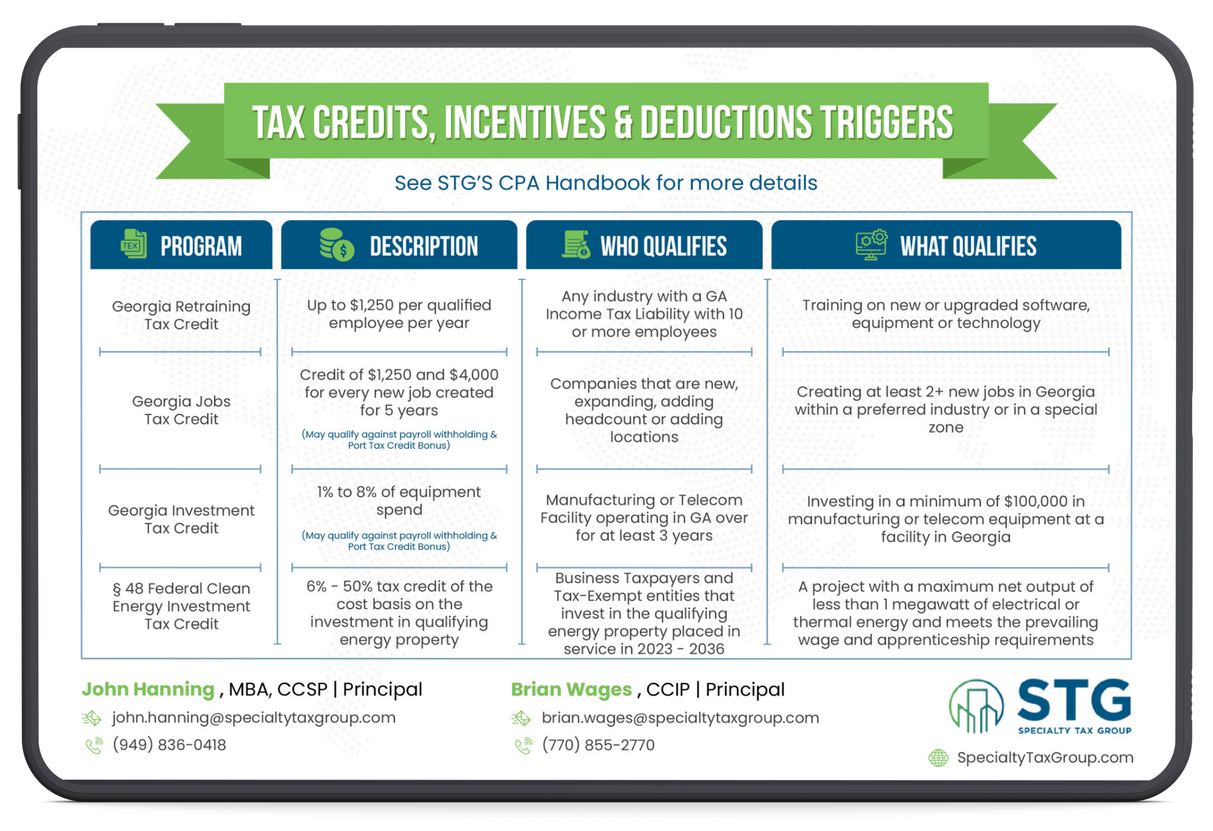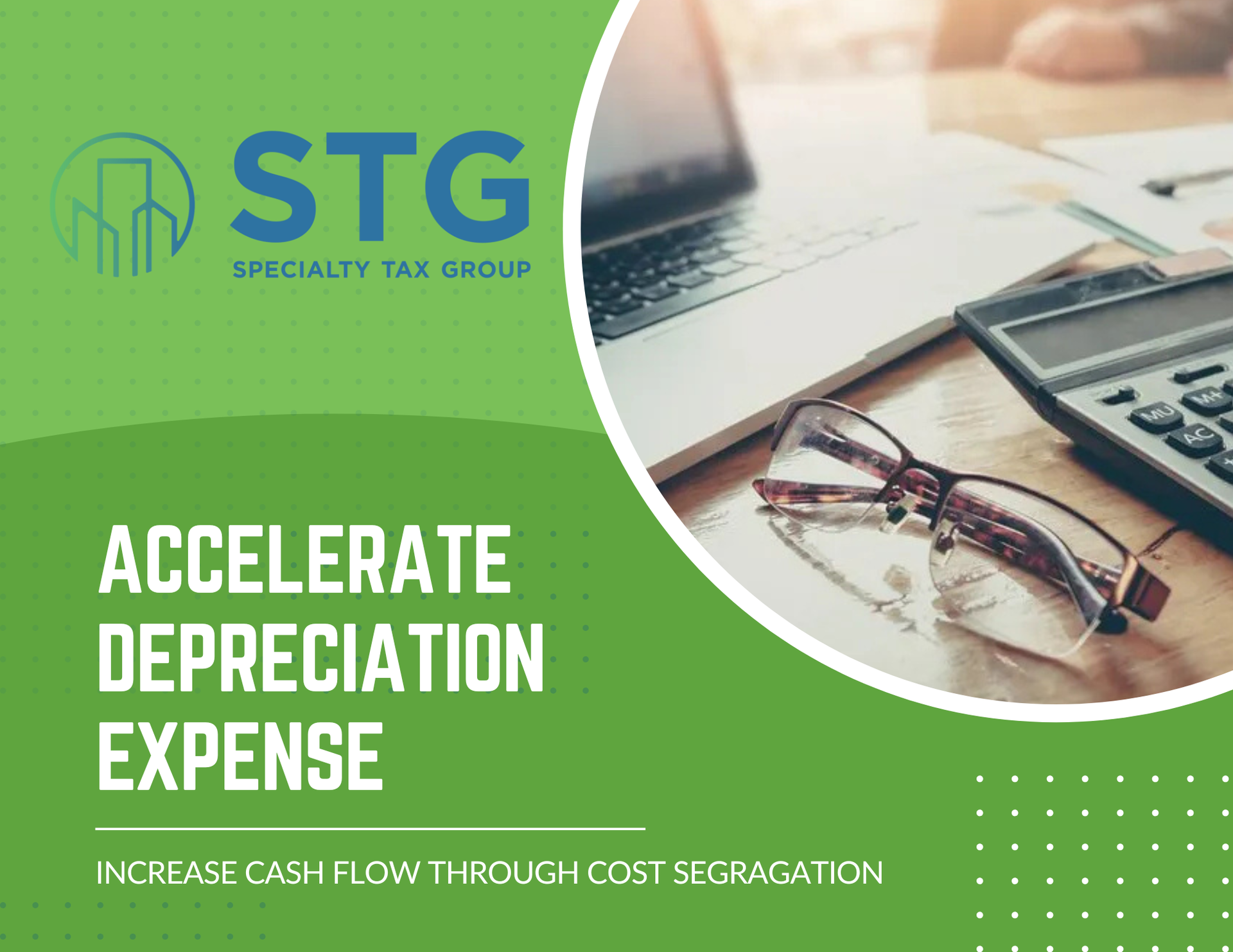This blog post has been researched, edited, and approved by John Hanning and Brian Wages. Join our newsletter below.
Key Takeaways
- 100% bonus depreciation is permanently restored for property placed in service after January 19, 2025, making cost segregation studies highly valuable again
- Section 174 R&D expenses can now be immediately deducted for domestic research starting in 2025, ending the problematic five-year amortization requirement
- Retroactive relief is available for some R&D expenses from 2022-2024, potentially unlocking significant cash flow improvements
- Energy incentives are being phased out after June 30, 2026, creating urgency for renewable energy projects
After years of uncertainty and waiting, business owners finally have the tax relief they've been hoping for. The One Big Beautiful Bill Act of 2025, signed into law on July 4th, delivers game-changing provisions that will transform how you approach equipment purchases, property investments, and research activities. These changes represent the most significant business tax reform since the original Tax Cuts and Jobs Act.
If you're a business owner, real estate investor, or company that invests in research and development, this legislation opens doors to substantial tax savings that were previously locked away. Let's break down exactly what these changes mean for your bottom line.
100% Bonus Depreciation Returns – And This Time It's Permanent
The restoration of 100% bonus depreciation represents one of the most significant wins in the new legislation. This provision allows businesses to write off the full cost of qualified property in the first year for assets placed in service after January 19, 2025.
Here's what makes this different from before: the new law makes this benefit permanent, eliminating the previous phase-down schedule that was set to end bonus depreciation by 2027.
What Qualifies for 100% Bonus Depreciation?
The enhanced bonus depreciation applies to:
| Asset Category | Examples | Typical Useful Life |
|---|---|---|
| Equipment & Machinery | Manufacturing equipment, computers, vehicles | 3-7 years |
| Furniture & Fixtures | Office furniture, restaurant equipment, retail fixtures | 5-7 years |
| Land Improvements | Parking lots, landscaping, outdoor lighting | 15 years |
| Qualified Improvement Property | Interior renovations, HVAC systems, flooring | 15 years |
Why does this matter so much for cost segregation? When you purchase or improve commercial real estate, a cost segregation study identifies components that qualify for accelerated depreciation. Previously, these shorter-lived assets were subject to reduced bonus depreciation percentages. Now, you can deduct 100% of qualifying improvements immediately.
Section 174 R&D Expenses: The Relief Everyone's Been Waiting For
Perhaps no tax provision has caused more frustration for businesses than the Section 174 amortization requirement that took effect in 2022. The new law creates Section 174A, which allows immediate expensing of domestic research and development costs.
What was the problem? Starting in 2022, businesses were forced to spread R&D deductions over five years instead of deducting them immediately. For example, if you spent $100,000 on U.S. R&D, you could only deduct $10,000 in the first year, with the remaining $90,000 spread over 4.5 years.
The New Rules for R&D Expenses
The legislation provides several key improvements:
- Immediate Expensing Restored: Companies can fully deduct domestic research costs in the year incurred for tax years beginning January 1, 2025.
- Geographic Distinction: While domestic R&D expenses qualify for immediate expensing, foreign R&D must still be amortized over 15 years.
- Retroactive Relief Available: Companies with capitalized domestic R&D expenses from 2022–2024 can elect a catch-up deduction, potentially providing significant cash flow improvements.
Who benefits most from these changes?
- Technology companies and startups
- Manufacturing businesses with active R&D programs
- Software development companies
- Companies developing new products or processes
Energy Incentives: Act Fast Before They're Gone
While the focus is on bonus depreciation and R&D relief, the legislation also phases out several energy-related incentives. This creates urgency for certain types of projects.
Key Energy Provisions Being Phased Out
| Incentive | Current Benefit | Phase-Out Date |
|---|---|---|
| Section 179D | Up to $5.00 per square foot deduction | Construction begins after June 30, 2026 |
| 45L Energy Credits | $2,500–$5,000 per residential unit | Construction begins after June 30, 2026 |
What should you do? If you're planning energy-efficient building projects, starting construction before the June 30, 2026, deadline ensures you can still claim these valuable green energy incentives.
Practical Steps to Maximize Your Tax Savings
Now that you understand the opportunities, here's how to put these changes to work:
For Real Estate Investors and Developers
- Schedule cost segregation studies for any properties purchased or improved after January 19, 2025
- Accelerate planned improvements to take advantage of 100% bonus depreciation
- Review energy-efficient projects and prioritize those that can begin construction before June 30, 2026
- Consider timing of property acquisitions to maximize first-year deductions
For R&D-Intensive Businesses
- Plan future R&D projects with immediate expensing in mind
- Contact your CPA to help assess your historical gross receipts to determine eligibility for amending prior year returns
- Review tax years 2022-2024 R&D credit claims to ensure you're maximizing the R&D Tax Credit
- Contact your CPA to plan for catch-up deductions if you choose not to amend prior year returns
How do these changes affect cash flow? The immediate deduction of R&D expenses and 100% bonus depreciation can dramatically reduce the taxpayer’s current-year tax liability. This is particularly valuable for growing businesses in need of an increase in cash flow.
Ready to maximize your tax savings? Contact our team to discuss how these changes affect your specific situation and develop a strategy to take full advantage of these opportunities.
2024 Tax Guide





